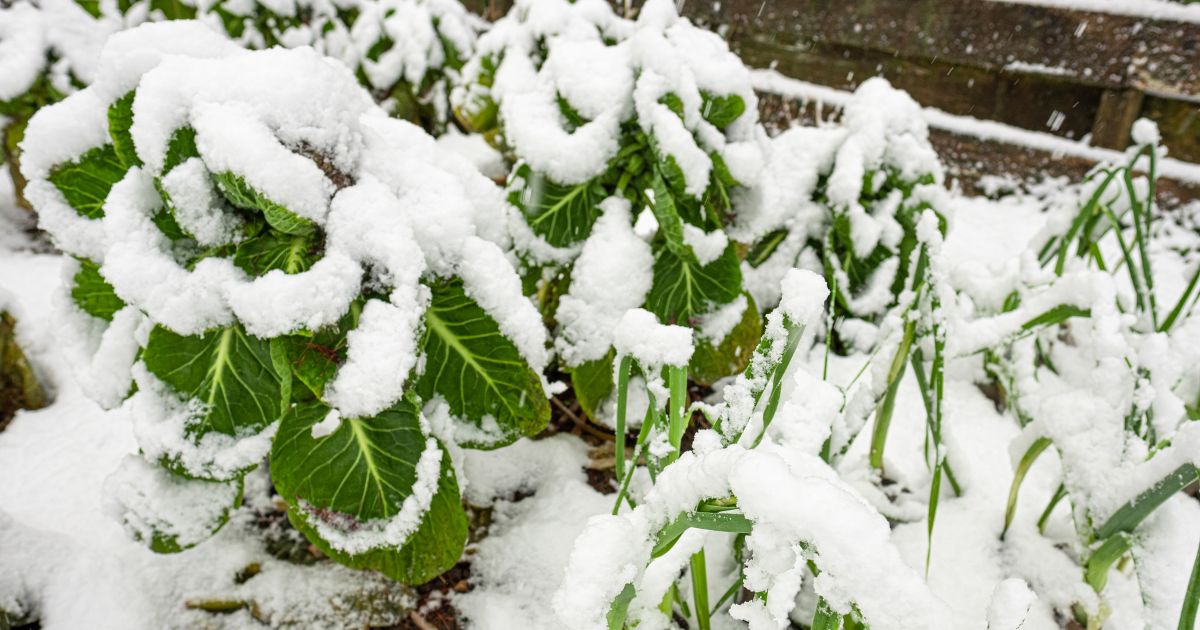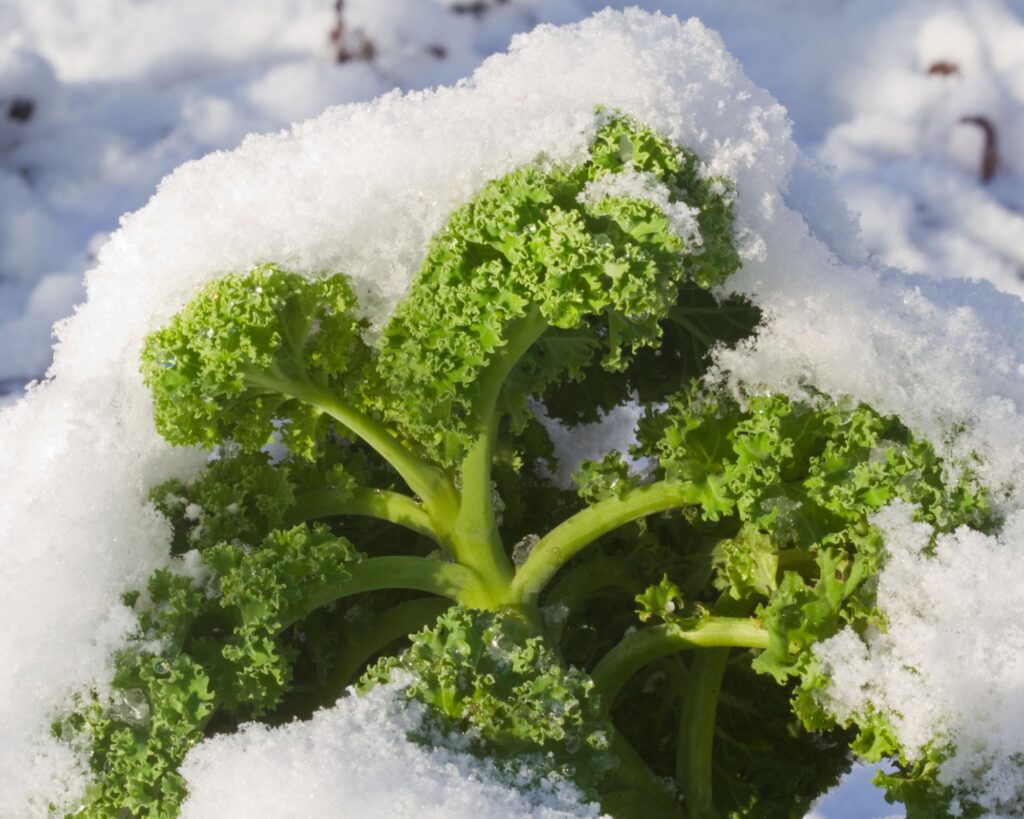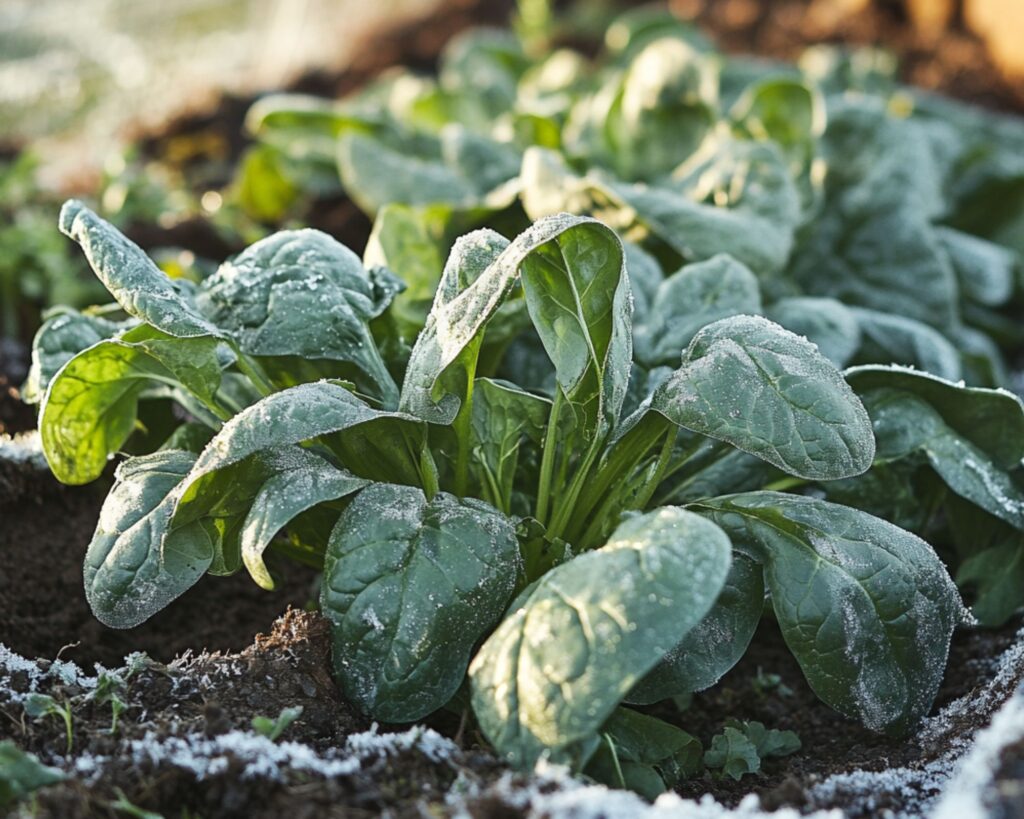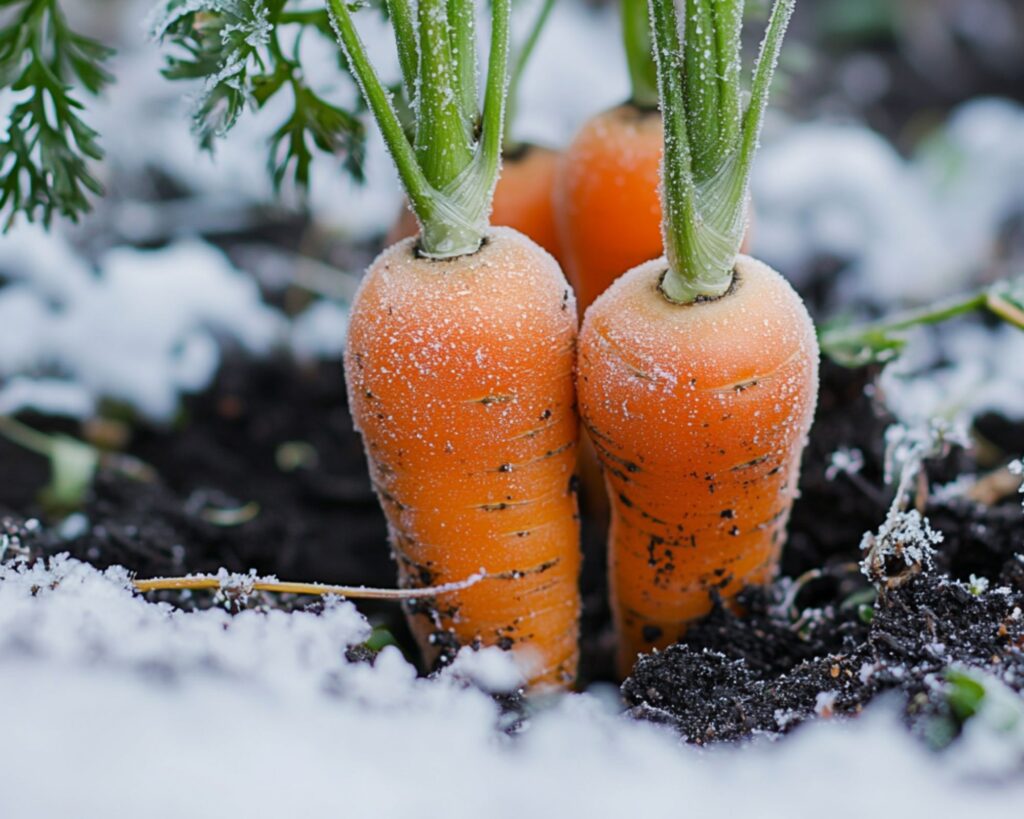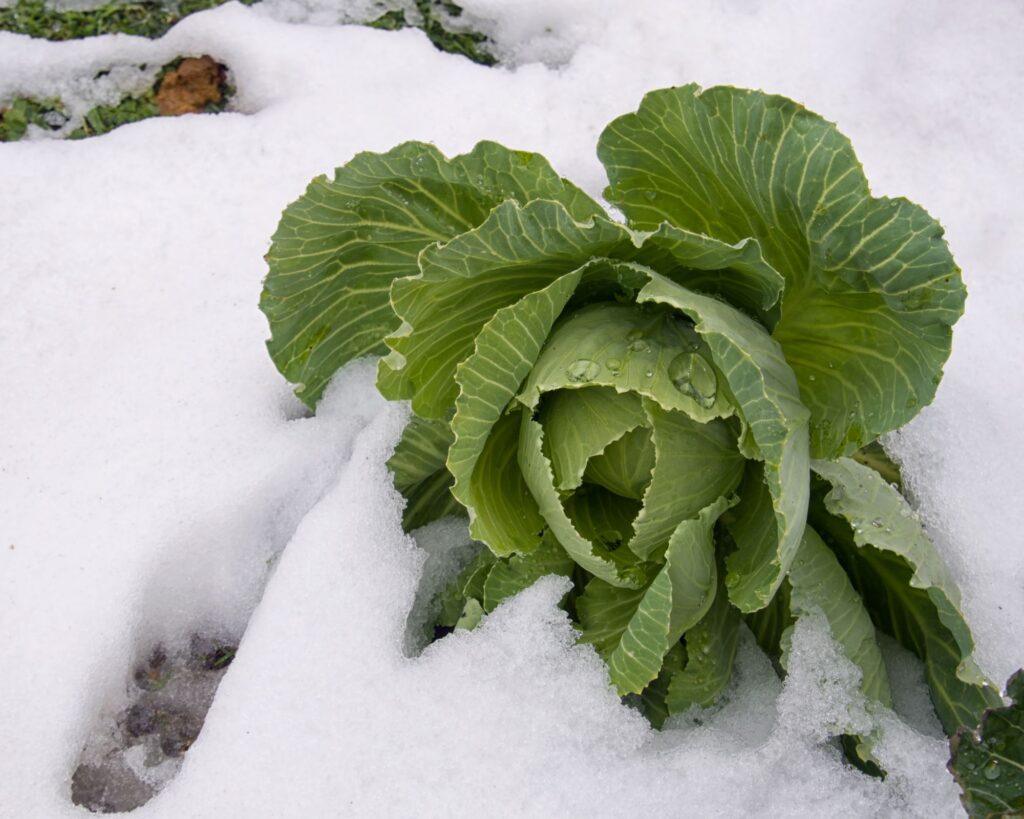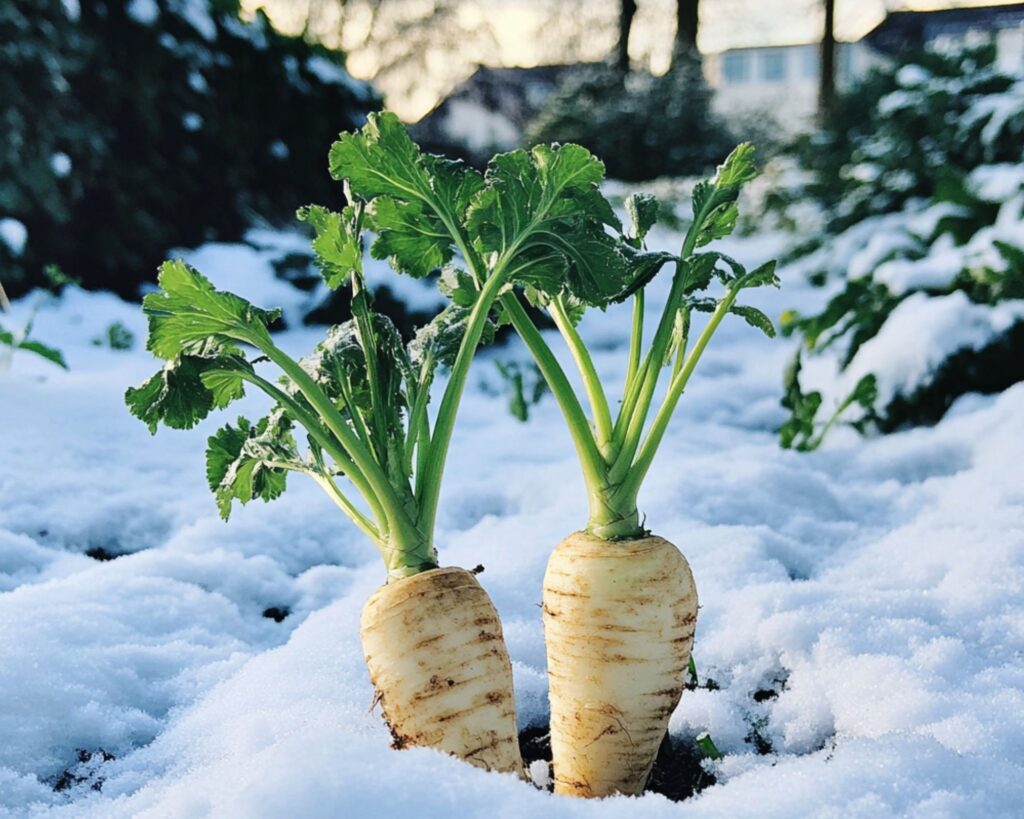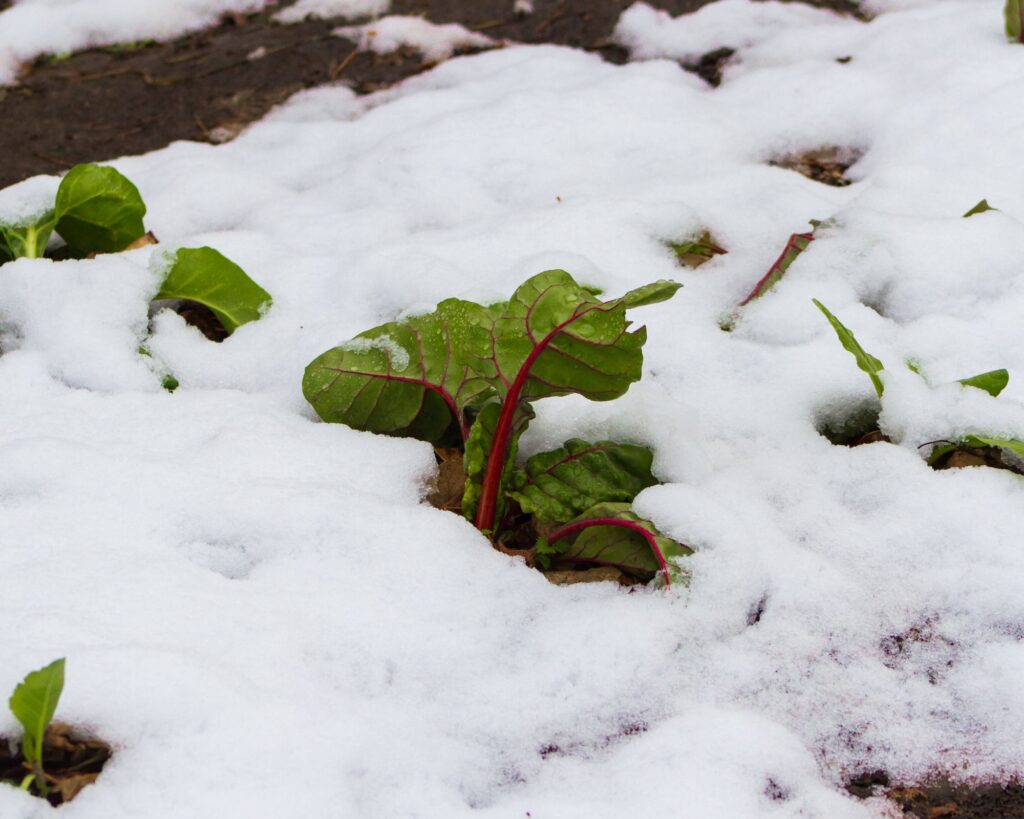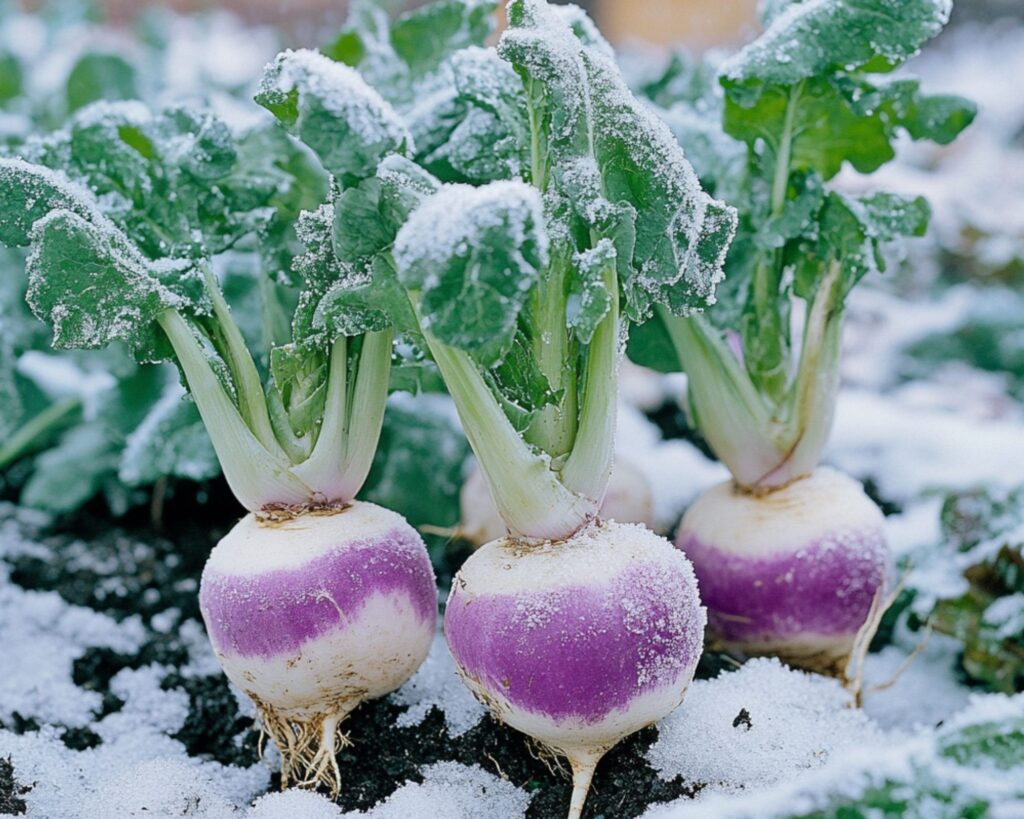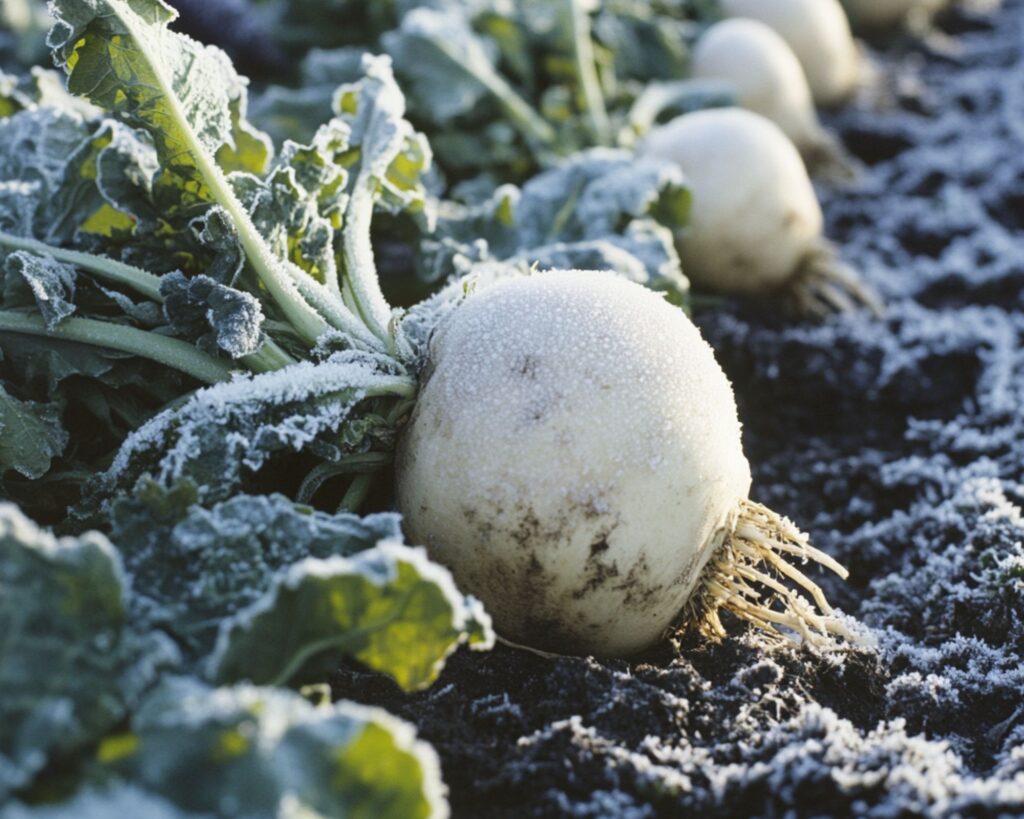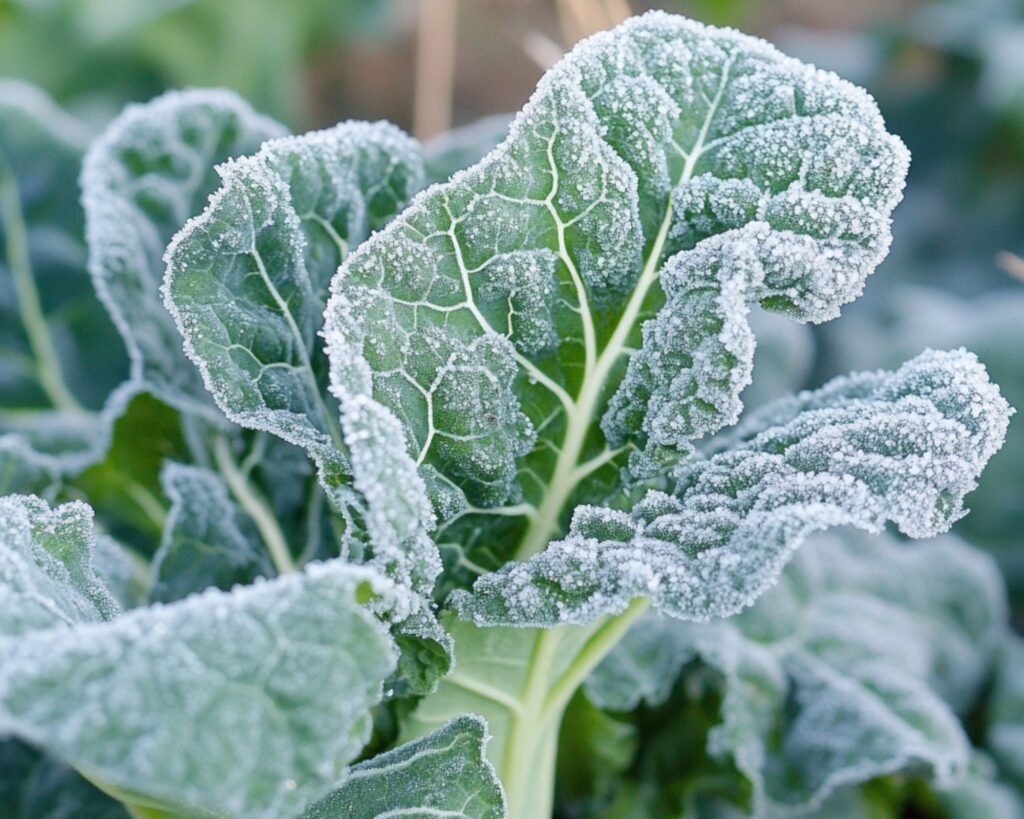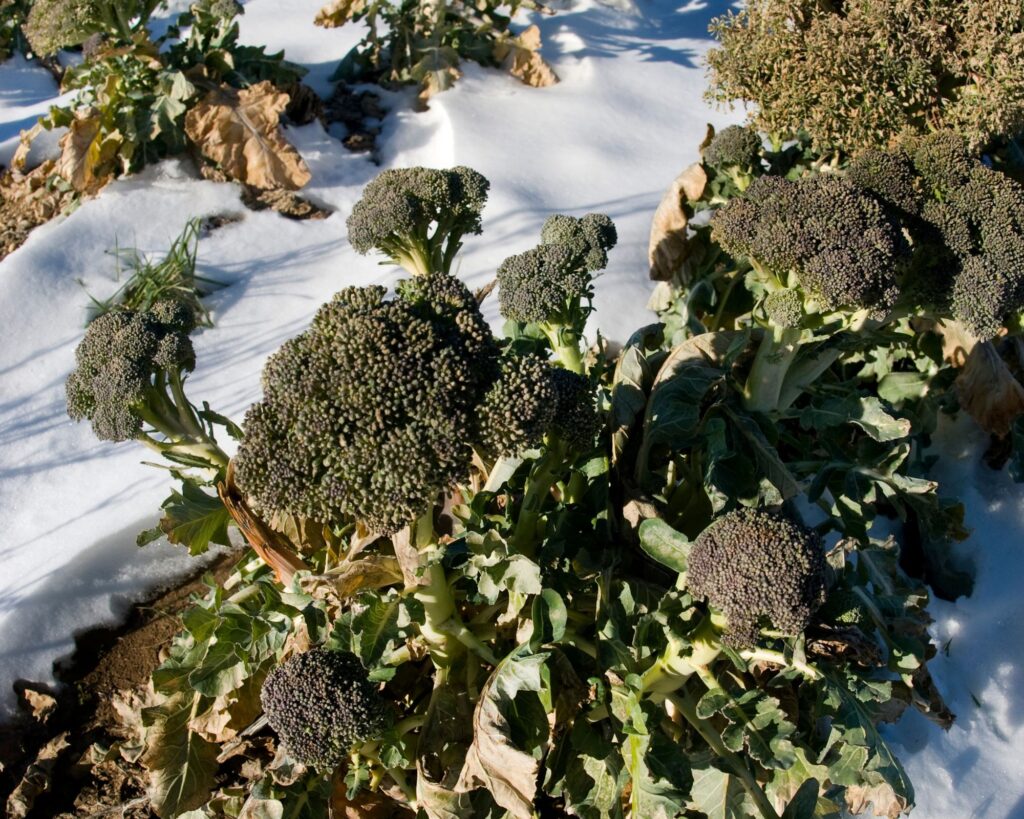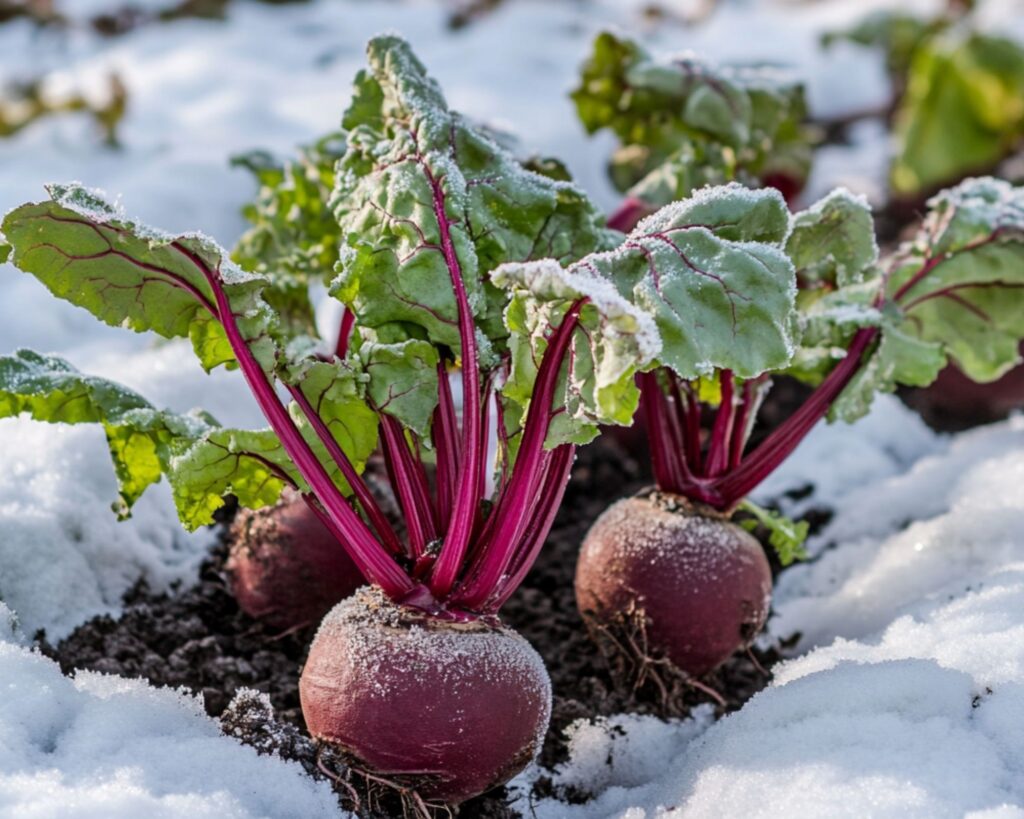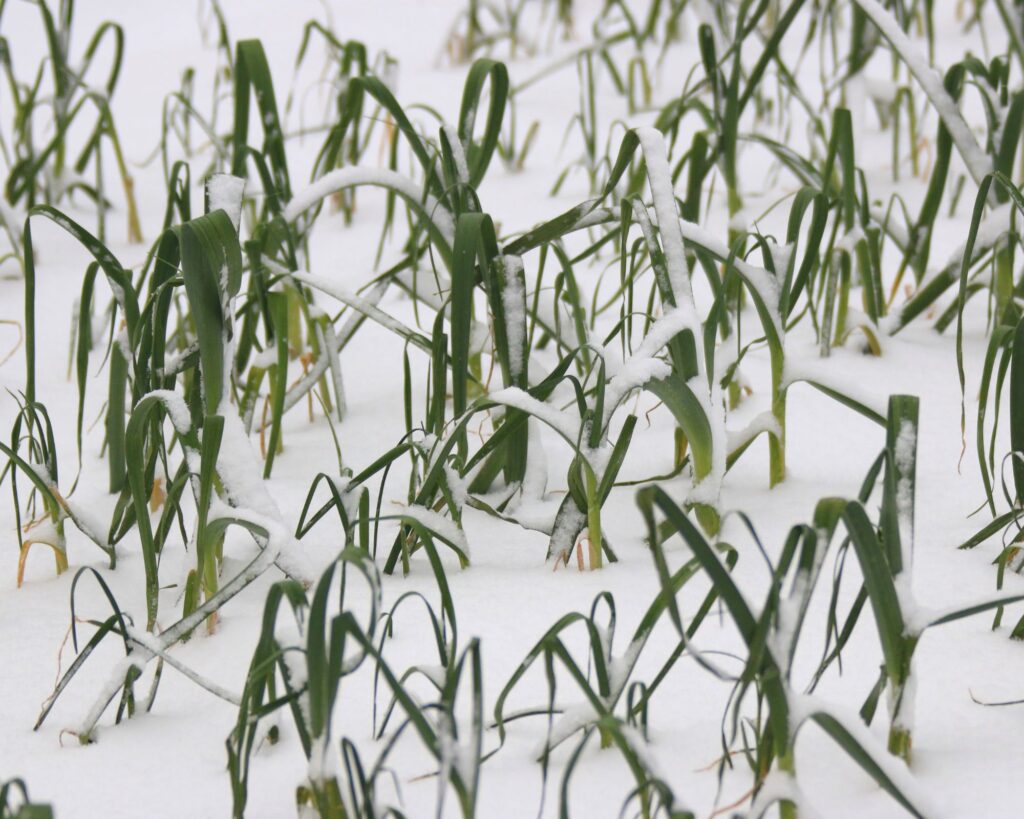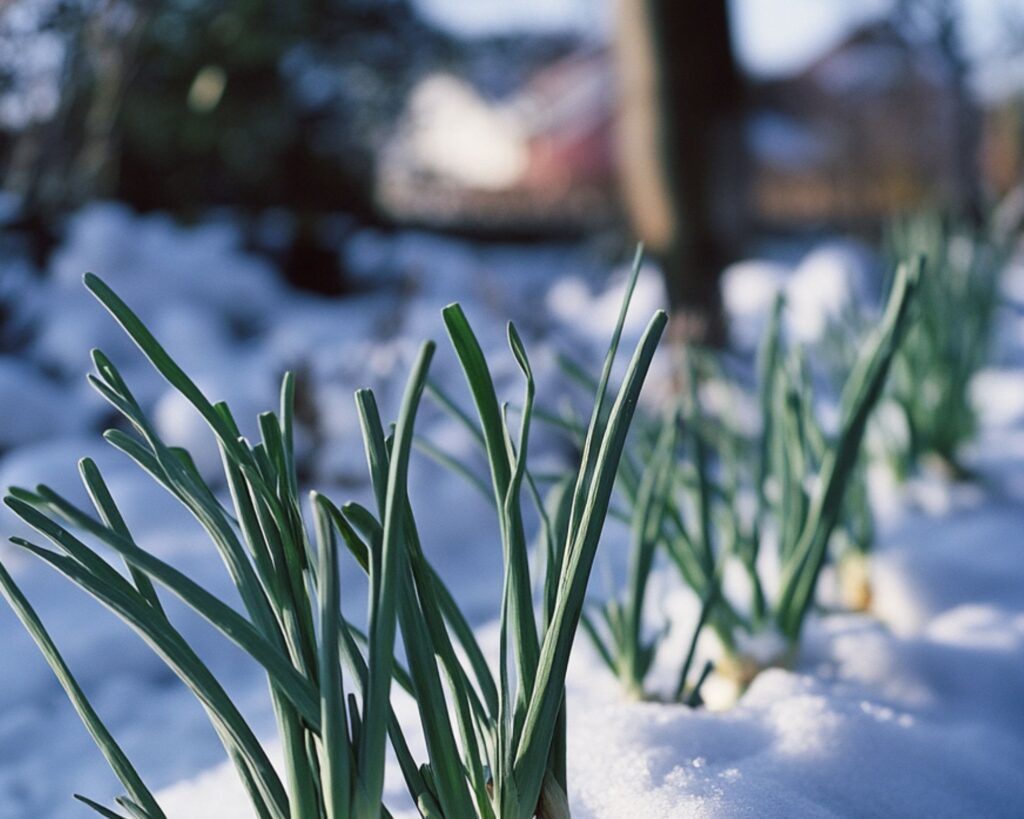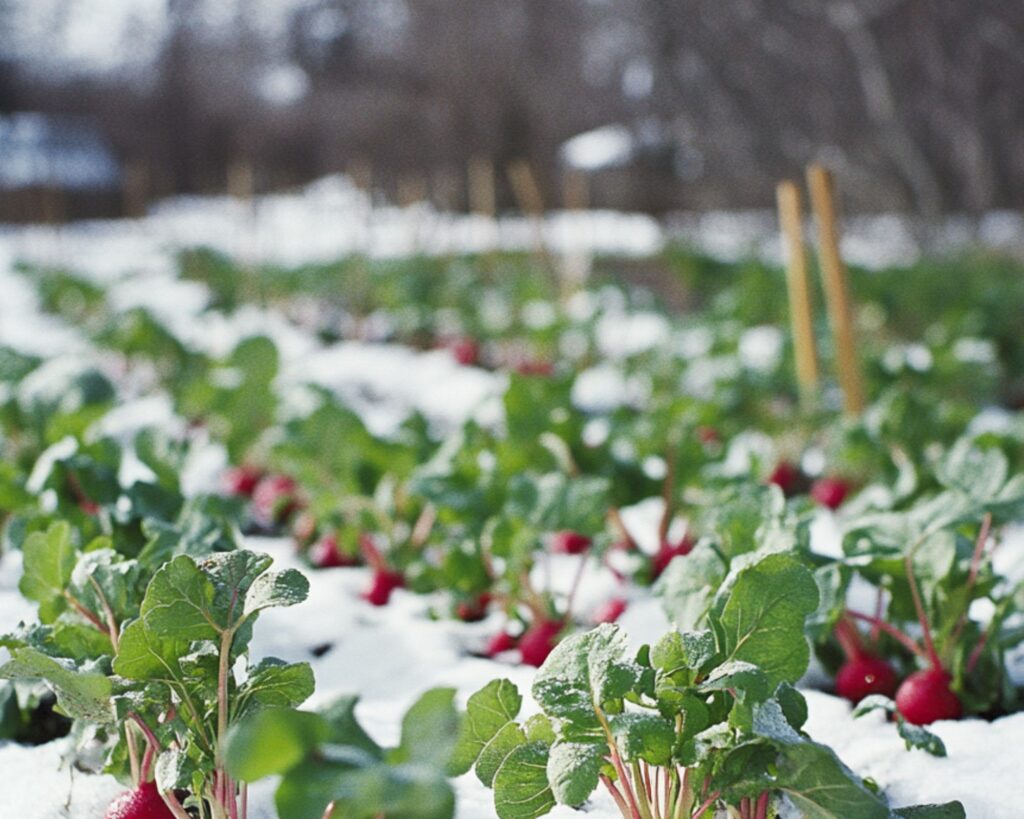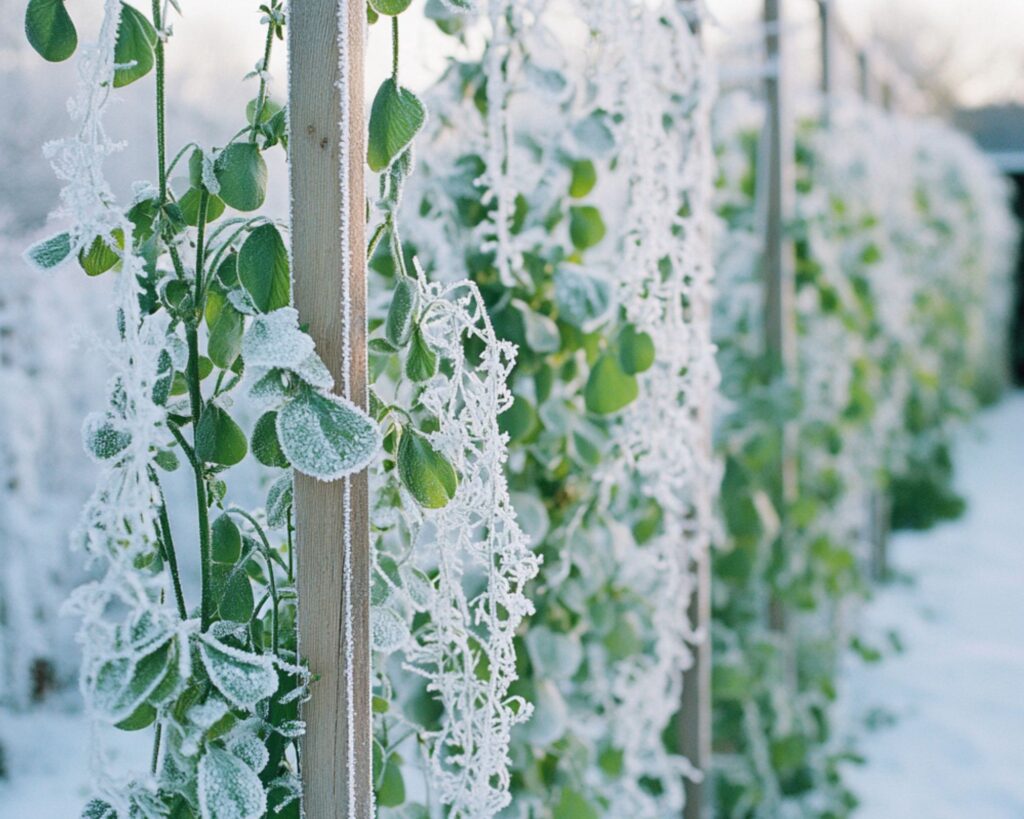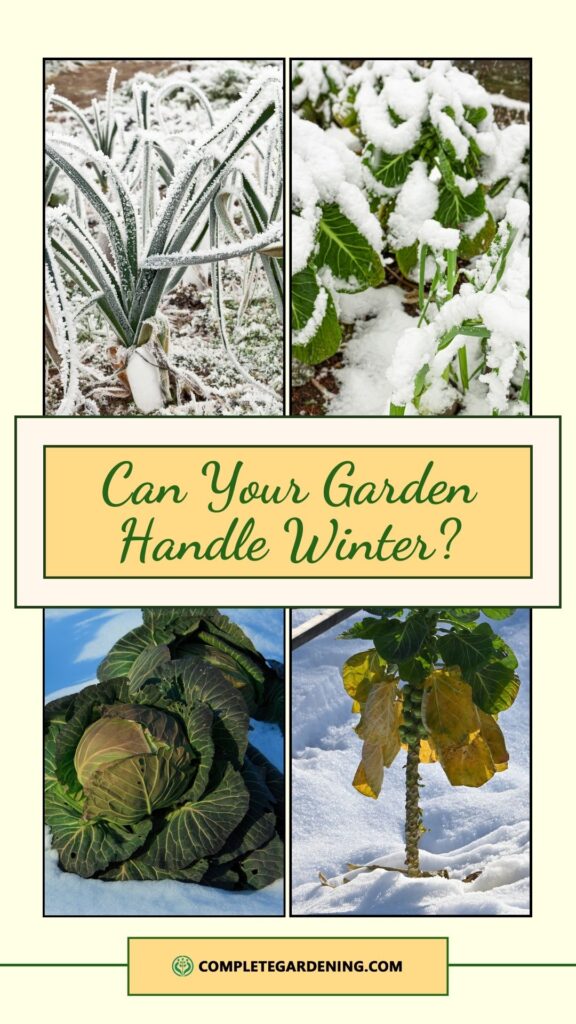Think your gardening days are over when the frost hits? Think again! What if you could still enjoy fresh, homegrown vegetables right through the winter? It’s easier than you think.
There are plenty of cold-hardy vegetables designed to handle frosty mornings and freezing nights, some of which even taste better after a good freeze!
In this article, we’ll dive into 17 vegetables that can tough it out in the cold, giving you tips to keep your garden thriving, no matter the season.
1. Kale
Kale is a superstar when it comes to surviving cold temperatures. In fact, kale tastes even better after it has been exposed to frost.
The leaves become sweeter and more tender, making this a perfect winter green. Kale can withstand temperatures as low as 10°F (-12°C) and will continue to grow, albeit more slowly, even during a cold snap.
Growing Tips:
- Plant kale in late summer for a fall harvest, or early fall for winter harvest.
- Use mulch to protect the roots from deep freezes and to retain moisture.
2. Spinach
Spinach is another leafy green that thrives in cold weather. It can survive temperatures as low as 20°F (-6°C), and a light frost can actually enhance its flavor.
Spinach is a fast-growing crop, so you can harvest it before deep winter sets in, or you can cover it with a cold frame to extend the season.
Growing Tips:
- Spinach prefers well-drained soil rich in organic matter.
- You can start spinach indoors and transplant it outdoors as the weather cools.
3. Carrots
Carrots are root vegetables that become sweeter after being exposed to a frost. The cold causes the starches in carrots to convert into sugars, improving their flavor.
Carrots can survive temperatures as low as 15°F (-9°C), and the soil acts as an insulator, protecting the roots from freezing.
Growing Tips:
- Sow carrots in late summer or early fall for a winter harvest.
- Mulch heavily around the plants to keep the soil temperature stable.
4. Brussels Sprouts
Brussels sprouts are incredibly cold-hardy, often improving in flavor after exposure to frost. These vegetables can tolerate freezing temperatures and will continue to develop on the plant well into winter.
They can survive temperatures as low as 20°F (-6°C), and some varieties are even hardier.
Growing Tips:
- Plant Brussels sprouts in early fall to give them plenty of time to mature before winter.
- Mulch around the base of the plants to protect the roots.
5. Cabbage
Cabbage is another member of the Brassica family that can survive freezing temperatures. It’s known for its cold tolerance and can survive temperatures as low as 20°F (-6°C) with little to no damage.
Like kale and Brussels sprouts, cabbage also benefits from frost, becoming sweeter and more flavorful.
Growing Tips:
- Cabbage prefers well-drained soil and cool weather for optimal growth.
- Cover with row covers to protect against extremely cold temperatures and pests.
6. Leeks
Leeks are incredibly tough and can withstand frost and freezing temperatures, often surviving down to 20°F (-6°C). They are slow-growing but worth the wait, providing a flavorful addition to soups, stews, and other winter dishes.
Growing Tips:
- Hill soil or mulch around the base of leeks to protect the edible part from freezing.
- Harvest leeks throughout winter as needed.
7. Parsnips
Parsnips are one of those vegetables that actually require exposure to frost to develop their full sweetness. They can survive temperatures as low as 0°F (-18°C) when properly mulched.
Parsnips are a long-season crop, so they are typically planted in spring and harvested in late fall or winter.
Growing Tips:
- Mulch heavily to protect the roots from deep freezes.
- Harvest throughout the winter, digging up roots as needed.
8. Swiss Chard
Swiss chard is a cold-tolerant green that can survive light frosts. While it’s not as hardy as kale or spinach, it can still withstand temperatures as low as 20°F (-6°C) and will continue to grow during cold months.
Growing Tips:
- Mulch around the plants to provide additional insulation.
- Consider using row covers or cold frames to extend the growing season.
9. Turnips
Turnips, like many other root vegetables, are well-suited to cold climates. Both the greens and the roots can survive light frosts, and the roots themselves can withstand temperatures as low as 20°F (-6°C). In fact, turnips are often sweeter after a frost.
Growing Tips:
- Plant turnips in late summer for a fall and winter harvest.
- Harvest the greens early in the season, but leave the roots in the ground for later use.
10. Rutabagas
Rutabagas, a close relative of turnips, are also cold-hardy and can withstand freezing temperatures as low as 20°F (-6°C). Like other root vegetables, rutabagas become sweeter after a frost, making them a perfect addition to winter meals.
Growing Tips:
- Mulch around rutabagas to protect the roots from freezing.
- Harvest as needed throughout the winter months.
11. Collard Greens
Collard greens are one of the hardiest leafy greens, able to survive temperatures down to 15°F (-9°C). They actually improve in flavor after a frost, becoming less bitter and more tender.
Growing Tips:
- Plant collard greens in late summer or early fall for winter harvesting.
- Mulch around the plants to protect them from extreme cold.
12. Broccoli
Broccoli is another member of the Brassica family that can handle cold weather. While it’s not quite as hardy as Brussels sprouts or kale, it can still survive temperatures down to 26°F (-3°C).
Broccoli heads may develop more slowly in cold weather, but the cold won’t harm them.
Growing Tips:
- Plant broccoli in late summer for a fall harvest, or early fall for winter harvest.
- Mulch around the base of the plant to protect it from cold.
13. Beets
Beets are root vegetables that can survive freezing temperatures, especially when mulched. The greens can tolerate frost, and the roots can remain in the ground well into winter if properly insulated. Beets become sweeter after a frost, much like carrots.
Growing Tips:
- Sow beets in late summer for a fall and winter harvest.
- Mulch heavily to protect the roots from freezing temperatures.
14. Garlic
Garlic is often planted in the fall and allowed to overwinter for a spring or summer harvest. It can survive freezing temperatures and will continue to grow slowly through the winter months.
Garlic needs a period of cold to develop properly, making it ideal for winter planting.
Growing Tips:
- Plant garlic in the fall, about six weeks before the first frost.
- Mulch heavily to protect the cloves during the winter.
15. Onions
Onions are cold-hardy vegetables that can survive freezing temperatures, especially if they are in the early stages of growth. Some varieties, such as winter onions or “overwintering” onions, are specifically designed to handle cold weather.
Growing Tips:
- Plant onions in the fall for a late spring or early summer harvest.
- Mulch to protect young plants from freezing conditions.
16. Radishes
Radishes are fast-growing and cold-hardy, making them ideal for late fall and early winter planting. They can survive temperatures as low as 20°F (-6°C) and grow quickly, meaning you can harvest them before the ground freezes solid.
Growing Tips:
- Sow radishes in early fall for a winter harvest.
- Harvest before the ground becomes too cold to dig.
17. Peas
Peas, especially certain varieties like snow peas and sugar snap peas, are quite cold-tolerant. While peas may not thrive in the deep of winter, they can handle light frosts and freezing temperatures down to 28°F (-2°C).
Growing Tips:
- Plant peas in early fall or late winter for a cool-season harvest.
- Use a cold frame or row cover to protect them from extreme cold.
By selecting the right vegetables and employing simple techniques like mulching and using cold frames, you can continue to enjoy fresh produce well into the winter months.
Cold-hardy vegetables not only survive freezing temperatures but often thrive in them, producing sweeter and more flavorful harvests.
Whether you’re looking to extend your growing season or maintain a year-round garden, these 17 vegetables are excellent choices for cold weather gardening.
